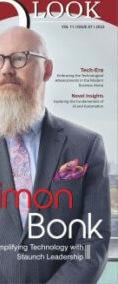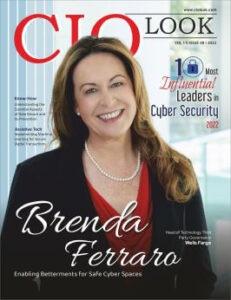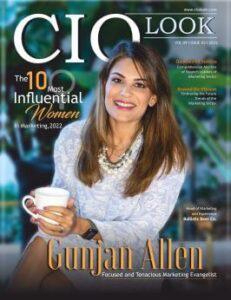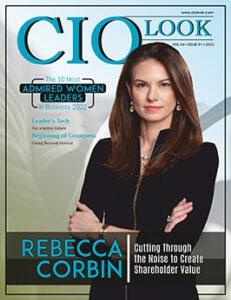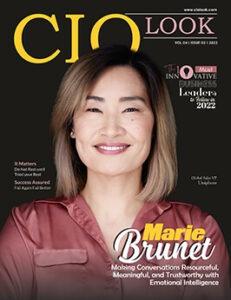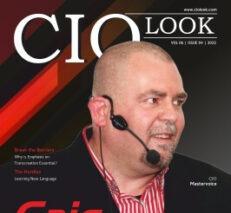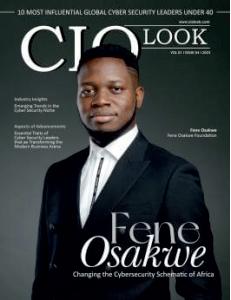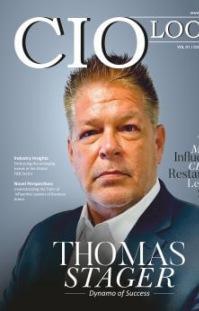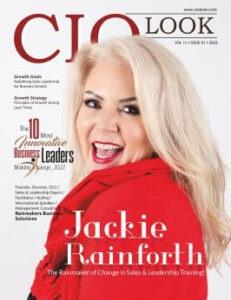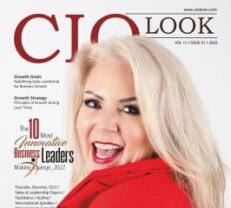Learning Outcomes
Why Is Inclusive Educa�on Important for All Learners?
Revolu�onizing Access
The Rise of Educa�on Technology Influencers
AUGUST|ISSUE: 514|2025

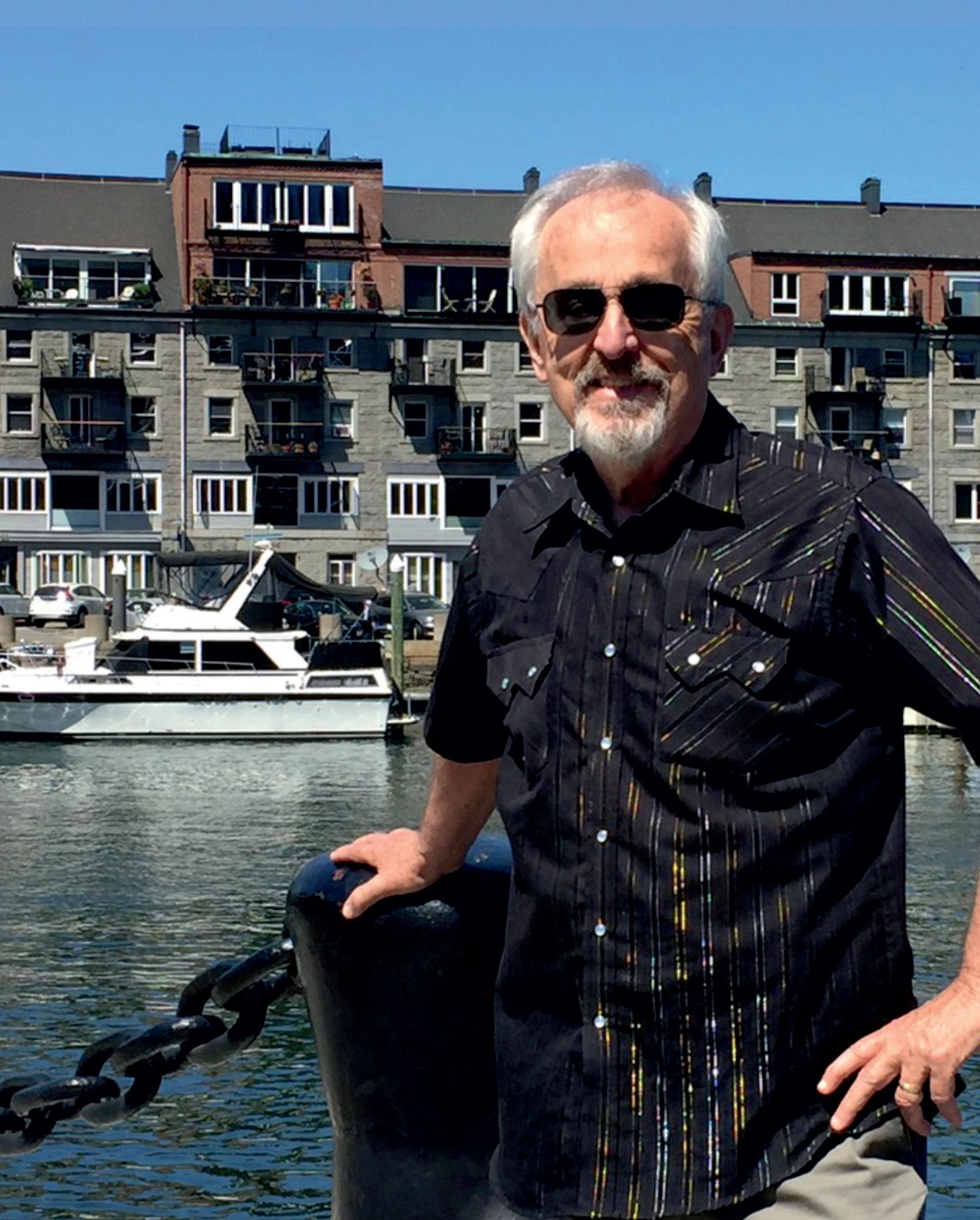




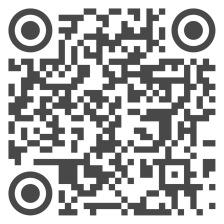

Why Is Inclusive Educa�on Important for All Learners?
Revolu�onizing Access
The Rise of Educa�on Technology Influencers
AUGUST|ISSUE: 514|2025











Intoday’srapidlyevolvingworld,shapedby
technologicaladvancements,societalshifts,andglobal challenges,educationplaysapivotalroleinpreparing futureleaders.Drivingthistransformationarevisionary educationalleaderswhoreimaginelearningtofostercritical thinking,innovation,andresponsibleleadership.Their impactextendsbeyondadministration,astheychampion inclusive,learner-centeredsystemsthroughtechnology integration,equitableaccess,andholisticdevelopment. AmongtheseleadersisDr.RichardC.Larson,a distinguishedpioneerineducationandoperationsresearch (OR).
CIOLookinitsrecenteditiontitledPioneeringProgress: America’sEducationalLeaderof2025highlightsthe outstandingcontributionsofDr.Larson.Overa distinguishedfive-decadecareerattheMassachusetts InstituteofTechnology(MIT),Dr.Larsonhasprofoundly influencedacademia,publicsystems,andglobaleducation. Recognizedforhisinterdisciplinaryexpertise,hehas advancedfieldsrangingfromurbanlogisticstopandemic response,whileinspiringgenerationsofstudentstotackle
complexanalyticalchallenges.Avisionarybothintheory andpractice,Dr.Larsoncharacterizeseducationasa “breathtakingladder,”underscoringitsenduringvaluefor personaldevelopmentandsocietalprogress.Amonghis notableaccomplishmentsisthefoundingofMIT BLOSSOMS,aglobalSTEMinitiativethatreflectshis dedicationtoprovidingaccessible,high-qualityeducation worldwide.
Dr.Larsonisadistinguishedresearcherandeducatorwhose influenceextendsfarbeyondtheclassroom.Throughouthis career,hehasmentoredandinspiredcountlessstudentsand professionalsacrossdiversefields.Hisimpactisevidentnot onlyinhisscholarlycontributionsbutalsointhemany livesandcareershehasshaped.Dr.Larson’slegacy exemplifiesthetransformativepowerofeducationdriven byintellectualcuriosity,interdisciplinarycollaboration,and purposefulleadership,cultivatingfutureleadersacross academia,government,andindustry
Haveagreatreadahead!

Managing Editor
08. The Visionary Bridge-Builder Who Transformed Learning and Operations Research at MIT
18.
22. Learning Outcomes: Why Is Inclusive Education Important for All Learners?
Revolutionizing Access: The Rise of Education Technology Inuencers THE FRONT PAGE EXCLUSIVE INDUSTRY INSIGHTS
Pooja M Bansal Editor-in-Chief
Deputy Editor Anish Miller
Managing Editor Prince Bolton

FOLLOWUSON WE ARE ALSO AVAILABLE ON
DESIGN
Visualizer Dave Bates
Art & Design Director Davis Mar�n
Associate Designer Jameson Carl
Senior Sales Manager Fa�ma A.
Manager- Media Partnerships Amira A
Customer Success Manager Nelson M. Sales Execu�ves Tim, Smith
TECHNICAL
Technical Head Peter Hayden
Technical Consultant Victor Collins
Email info@ciolook com For Subscrip�on www.ciolookmedia.com CONTACTUSON
Copyright © 2025 CIOLOOK, All rights reserved. The content and images used in this magazine should not be reproduced or transmi�ed in any form or by any means, electronic, mechanical, photocopying, recording or otherwise, without prior permission from CIOLOOK. Reprint rights remain solely with CIOLOOK.
Research Analyst Eric Smith
SEO Execu�ve Alen Spencer www facebook.com/CIOLookMedia/ www.x.com/CIOLookmedia




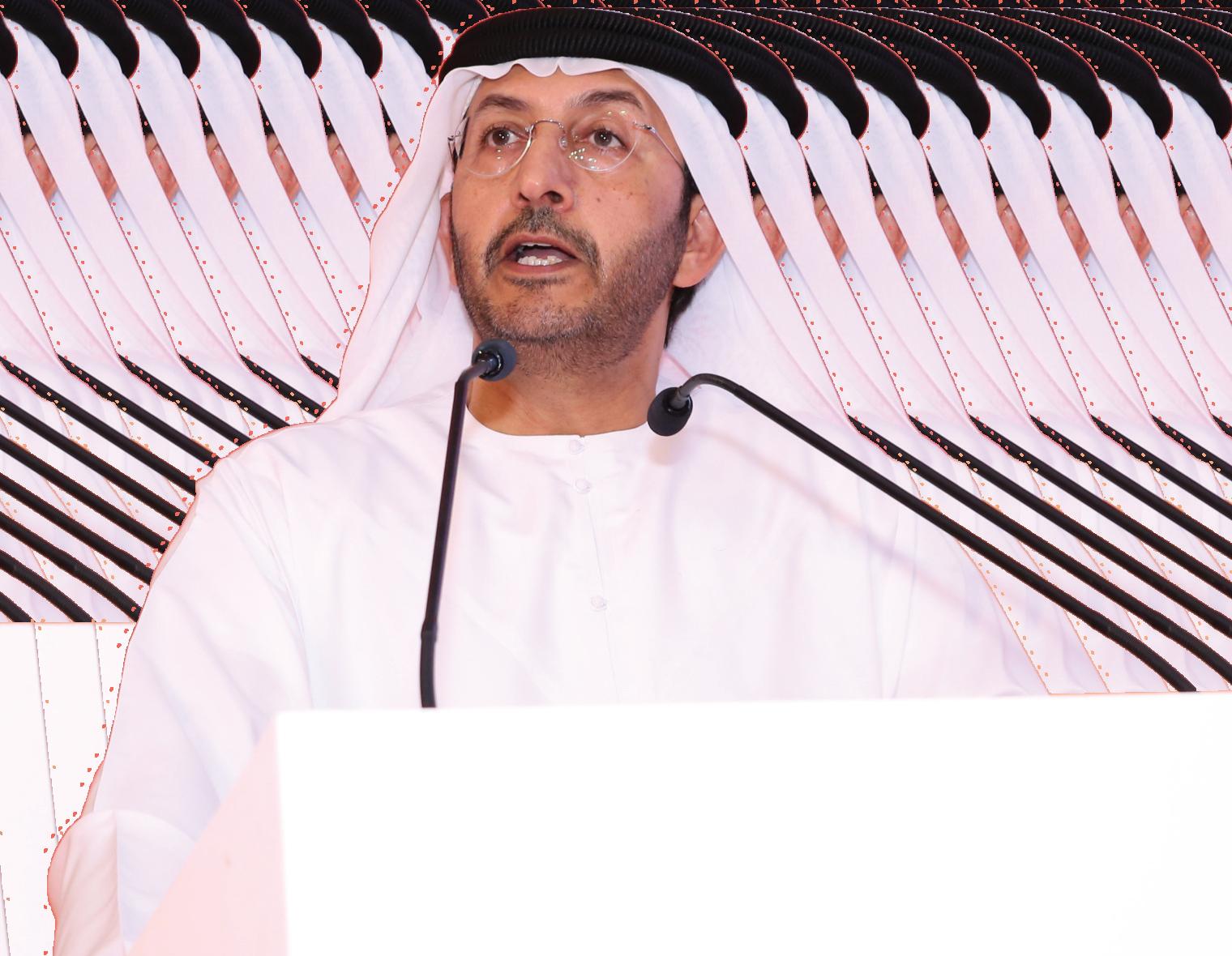

As Dr. Larson reects on his career, his vision is clear: he wishes to be remembered as someone who loved what he did—not as a job, but as a purpose-driven calling.


Richard Lasrson MIT Professor


Education, in its most transformative form, is often
shaped not by policies or institutions, but by individuals—thoserarementorswhoseeitspotential notonlyasameanstoemploymentbutasalifelongladderto discovery, empowerment, and social change. Among such trailblazers stands Dr. Richard C. Larson, a name synonymous with innovation in both education and operations research (OR). Known widely for his deep insights and expansive contributions, Dr. Larson's journey spans over five decades at the Massachusetts Institute of Technology (MIT), where his influence has quietly but indeliblyreshapedtheeducationallandscapeandenrichedthe ORdiscipline.
From nurturing students through complex analytical disciplines to influencing public systems like healthcare, urbanlogistics,andevenpandemicresponseframeworks,Dr. Larsonhaswornmanyhats—withallstitchedfromashared thread of visionary commitment. His journey isn't merely a careertimeline;itisacasestudyinhowcuriosity,mentorship, and multidisciplinary thinking can rewire academia for a better,smarterfuture.
In this detailed profile, we explore Dr. Richard Larson's formative years, his rise as a leading professor at MIT, his philosophical approaches to teaching, and how he became a legacy-maker for generations of educators, researchers, and policy designers across the globe.This is the story of a man whose quiet brilliance earned him the title of "The Unseen Architect" of modern educational thought and operational efficiency.
Richard Larson was born in 1943 in Bayside Queens, New York City However, his foundational years took shape in PennsylvaniaandlaterinNorthPlainfield,NewJersey Itwas during this period that Larson began developing a keen interestinscience,drivenmorebycuriositythanobligation. Despite an aversion to chemistry and a struggle with the intricacies of biology, physics came naturally to him—offeringnotjustlogicalclaritybutthefreedomtothink beyondfacts.
After graduating from Needham High School in Massachusetts, Larson enrolled at MIT There, he pursued andcompletedhisBachelor's,Master's,andPh.D.degrees in electrical engineering, marking the beginning of what wouldbecomeanextraordinaryintellectualodyssey.
Dr. Larson often describes himself as a libertarian thinker—onewhoavoidsbeingboxedintonarrowacademic silos While many might have aspired to become accomplished physicists, he recognized early on that his broader calling lay in bridging disciplines, not being confined within them. It was this inclination that led him to operationsresearch—adomainflexibleenoughtoincorporate mathematics, engineering, social behavior, and policymaking.
Dr. Richard Larson's life is a masterclass in how one person can multiply their impact through education, innovation, and mentorship. “
His academic journey wasn't a straight line, but rather a bridgeacrossdisciplines.Overhistenure,Dr.Larsontaught in five different departments, starting with Electrical EngineeringandComputerScience,andlatercontributing toMIT'sInstituteforData,Systems,andSociety(IDSS) Hispersonaldisciplinewasvisiblenotonlyinhisresearchbut inhisabilitytocross-pollinateideasacrossdepartments,often developing courses that drew from multiple schools of thought.
Larson'sacceptanceintoMITremainsetchedinhismemory as a surreal moment. When his mother handed him the acceptanceletter,hebelievedittobeamistake.Itwasn'tuntil hecontactedtheadmissionsofficethatherealizedhewaspart
of a much broader syndrome the "Groucho Marx Syndrome" where high-achieving students often doubt their accomplishments. That moment, however, became the turningpointofalifetimedevotedtoMITanditsmissionto educateandinspire.
His admiration for MIT and its ecosystem never waned. He frequently describes education as a "breathtaking ladder"—alimitlessresourcethatopensdoorstouncharted worlds. To Larson, education isn't just an investment; it's a permanentassetthatnoonecantakeaway
Dr Larson vividly recalls a transformative encounter with a studentwhowasonthevergeofdroppingoutduetoapoor

exam score. Instead of letting the student give up, Larson chose to mentor him offering time, attention, and motivation Through several conversations and focused guidance,thestudentnotonlystayedbutendedupexcelling.
This wasn't an isolated incident. Stories of Richard Larson's mentorshipabound,especiallyfromstudentswhohavesince gone on to contribute to academia, government, and the corporate sector. For him, teaching wasn't about information transfer; it was about lighting intellectual firesthatcontinuetoburnlongaftertheclassends.
Asathoughtleaderinoperationsresearch,Dr Larsonhasleft anindeliblemark.Fromurbanpolicepatroloptimizationto pandemic modeling, smart energy systems, and logistics frameworks,hisworkdemonstratesthepowerofORtosolve real-worldchallenges.
Oneofhisearliestlandmarkcontributionswasthepublication of "Urban Police Patrol Analysis" in1972,whichwentonto wintheprestigiousLanchesterPrize Hislaterworkfocused on vaccine distribution, especially during the H1N1

pandemic, and was recognized with the Best Paper of the YearAwardin Value in Health.HisresearchduringCOVID19hasfurthershownhowmathematicalmodelingcanguide policydecisionsduringglobalcrises.
Throughout his career, Dr. Larson played numerous leadership roles. He served as President of ORSA (19931994)andasPastPresidentofINFORMS.Formorethan15 years,heco-directedtheMITOperationsResearchCenter, shapingcurriculumandresearchforgenerations.
Perhaps his most impactful initiative was the MIT BLOSSOMSprogram,aneducationaloutreacheffortaimed attransforminghighschoolSTEMeducationglobally.Under Larson'sguidance,BLOSSOMSproducedhundredsofvideo lessons t
countries—underscoringhisbeliefthat technology-enabled educationcanbridgelearninggapsworldwide
Dr. Larson's teaching philosophy remained remarkably consistent. While tools, platforms, and syllabi evolved, his emphasis on engagement never wavered. He was particularlyfondofteachingpracticalORtopicslikeairline schedulingandqueuingsystems,whichheconsideredboth relatableandintellectuallyrich.
He often referred to OR as "the most important invisible profession", one that operates behind the scenes of nearly every modern system from ride-sharing algorithms to publichealthinterventions.Hismissionwasnotjusttoteach
but to make students fall in love with complexity, helping themseetherelevanceofabstractmodelsineverydaylife.
In Larson's eyes, a visionary leader isn't someone who demands obedience but someone who inspires inquiry and courage. He encouraged students to challenge norms, to question, to be curious, and—perhaps most importantly—to carvepathswherenoneexisted.
Suchleaders,hebelieved,notonlyshapenewparadigmsbut also empower others to follow in their footsteps. In his classrooms,questionswereneverdiscouraged.Instead,they wereseenastheseedsofinnovation.
As Dr Larson reflects on his career, his vision is clear: he wishes to be remembered as someone who loved what he did—notasajob,butasapurpose-drivencalling Hetakes pride in the fact that many of his students have gone on to createmeaningfulchangeacrossacademia,government,and privatesectors.
His legacy isn't merely in the books he authored or the programsheledbutinthemindsheshapedandthevalueshe instilled. He sees himself as a value-adder, someone who continuouslysoughttoredefinethescopeandrelevanceof operations research, not only within academia but across society.
Stories of Richard Larson's mentorship abound, especially from students who have since gone on to contribute to academia, government, and the corporate sector. For him, teaching wasn't about information transfer; it was about lighting intellectual fires that continue to burn long after the class ends. “

Dr. Larson's teaching philosophy remained remarkably consistent. While tools, platforms, and syllabi evolved, his emphasis on engagement never wavered.


Dr. Larson's contributions have been widely recognized His first book earned him the LanchesterPrize, one of the highest honors in OR. He later received multiple best paper awards for his workonpandemicmodelingandSTEMeducation.
In 2015, he was awarded the Lawrence M. Klein Award by the U.S. Department of Labor for his work on the U.S. labor market. That same year, he wasfeaturedintheNewYorkTimes,highlightinghis role in reshaping how America understands the supplyanddemandofSTEMskills.
Dr.RichardLarson'slifeisamasterclassinhowone person can multiply their impact through education, innovation, and mentorship As a professor,author,leader,andmentor,hehasinspired thousands to believe not just in the power of knowledge but in the value of curiosity, resilience, andvision.
He didn't merely walk the corridors of MIT; he reshaped them to become more inclusive, dynamic, andfuture-facing.Indoingso,hebuiltbridges—not just between academic disciplines but between people,ideas,andpossibilities.
And in those bridges lies the true legacy of The UnseenArchitect.






Inclusive education is a transformative approach that seeks to accommodate all learners, regardless of their physical, intellectual, social, emotional, linguistic, or other conditions Rather than isolating students with differencesordisabilitiesintoseparateclassroomsorschools, inclusive education encourages full participation within mainstream educational settings This system supports diversityasanasset,promotingequityandequalopportunity for everyone. Importantly, inclusive education benefits not only students with special needs but also their peers, educators,andthewidercommunity.Thephilosophybehind inclusive education stems from the understanding that all studentsarecapableoflearningwhenprovidedwiththeright support and environment. It promotes the idea that learning environmentsshouldadapttotheindividualneedsofstudents insteadofexpectingstudentstoadapttoarigid,one-size-fitsallsystem.Thisapproachencouragesschoolstobuildflexible curricula,employdifferentiatedinstruction,andfosterasense ofbelongingforeverylearner.
Atitscore,inclusiveeducationisaboutequity Itensuresthat every student, regardless of background or ability, receives the support they need to succeed. This goes beyond simply having access to a classroom. It means making learning accessible through tailored instructional methods, assistive technologies,andemotionalsupportsystemsthatconsiderthe unique needs of each learner Schools that implement inclusive practices work to identify and remove barriers to learning, such as biased teaching materials or inaccessible physical environments. This model empowers students by recognizing their individual strengths and challenges while encouraging their growth within the same learning community.

Creatinginclusiveenvironmentsalsopromotesastrongsense of belonging. When students feel accepted and valued, they aremorelikelytoengageinthelearningprocess,participate in classroom activities, and build positive relationships with peers. This inclusive culture reduces instances of bullying, discrimination, and isolation, replacing them with understanding, acceptance, and mutual respect. For many learners, especially those who have traditionally been marginalized, this feeling of inclusion can significantly enhance their educational outcomes and overall well-being. Moreover,whenlearnerswitnessandparticipateininclusive interactions,theydevelopamoreopen-mindedandrespectful approachtodiversityintheirdailylives.
One of the most compelling arguments for inclusive education is that it benefits all students, not just those with special needs. When educators employ diverse teaching strategiestomeettheneedsofawiderangeoflearners,they enrich the educational experience for everyone. Methods such as cooperative learning, project-based instruction, and theuseofmultiplemodesofcommunicationpromotedeeper understanding and engagement across the board. These strategies are not only helpful for students with learning differencesbutalsosupportstudentswhomaystruggledueto language barriers, social anxiety, or other non-diagnosed challenges.
Furthermore, inclusive classrooms provide opportunities for peer-to-peer learning, where students support each other academicallyandsocially.Thisinteractionfostersasenseof responsibility, teamwork, and empathy. Students learn to appreciate different perspectives and strengths, which can leadtomorethoughtfulandrespectfulinteractionsbothinand outsidetheclassroom.Inclusiveeducationalsoreinforcesthe ideathatsuccessdoesnotlookthesameforeveryoneandthat achievement can be measured in diverse and meaningful ways.Inclusivepracticespromoteactiveengagement,critical thinking, and creativity. When students are encouraged to explore content through multiple lenses and express their understanding in different formats, they develop a deeper connectionwiththematerial.
Inclusive education also has a profound impact on teachers and school systems. It challenges educators to continuously expand their instructional practices and become more responsive to the needs of all learners This dynamic environment promotes professional growth, collaboration
amongteachingstaff,andthedevelopmentofmoreeffective teaching methods. Inclusive classrooms often require teachers to work closely with support staff, specialists, and families,fosteringamoreintegratedandsupportiveapproach toeducation.
As teachers become better equipped to address a wide spectrum of learning needs, their confidence and job satisfaction increase. This empowerment contributes to a more positive school climate and culture, where everyone feels a shared responsibility for student success. Inclusive education encourages educators to move away from rigid models of teaching and instead embrace a mindset of flexibility, creativity, and continuous improvement. Beyond theclassroom,inclusiveeducationfostersmorecohesiveand compassionate communities. When children grow up learning alongside peers with different abilities and backgrounds, they carry those inclusive values into adulthood. This leads to greater social cohesion, reduced prejudice,andincreasedcivicparticipation.
Inclusive education is a vital framework for shaping an equitable and just society. By prioritizing diversity and adapting to the varied needs of all learners, it ensures that every student is given the opportunity to succeed and feel valued The benefits extend far beyond the classroom, creating more compassionate individuals, more effective educators, and stronger communities. Inclusive education promotes a culture of respect, cooperation, and shared growth, helping prepare young people for the diverse and interconnectedworldtheywillenter.Asschoolsandsocieties continue to evolve, the importanceof inclusion in education becomesnotjustamoralimperativebutapracticalnecessity forlong-termsuccessandsocialharmony





Inrecentyears,thelandscapeofeducationhasundergone a transformative shift, fueled by the rapid growth of digitaltoolsandplatforms.Attheheartofthisevolution isanewcategoryofthoughtleaders—educationtechnology influencers. These individuals, often a mix of educators, entrepreneurs, technologists, and content creators, are playing an increasingly influential role in shaping opinions, driving innovation, and guiding educators and learners throughtheever-changingworldofedtech.Theirpresenceis being felt across social media platforms, professional networks, conferences, and even policy discussions, as they offerinsights,reviews,tutorials,andcommentarythatbridge the gap between technology developers and end users in education As the demand for effective digital learning solutions grows, education technology influencers are steppingintoapivotalrole.Theyarenotonlyintroducingnew toolsandplatformstoabroaderaudiencebutarealsocurating and contextualizing them in ways that make them more accessible and relevant to different educational settings. Whetherit'sthroughin-depthYouTubewalkthroughs,Twitter threads on pedagogical strategy, or blog posts analyzing the impact of AI in classrooms, these influencers are providing valuebeyondtraditionalproductmarketing.
One of the most significant contributions of education technologyinfluencersistheirabilitytoserveasinterpreters between two traditionally disconnected worlds — that of educatorsandthatofsoftwaredevelopers.

While tech companies focus on creating powerful, scalable solutions,manyeducatorsrequiremorepractical,contextual insights to determine how a tool will integrate into their specific teaching environments. Influencers with classroom experience offer a unique perspective, often highlighting strengths and limitations of edtech products through a pedagogical lens This makes their feedback especially valuable, as it helps educators make informed decisions and provides developers with the user-centric insight needed to refinetheirproducts.
Beyond product recommendations, these influencers are fosteringcommunitiesofpracticewhereeducatorscanlearn from each other and collaboratively explore new technologies. Social media platforms, especially LinkedIn, YouTube, Instagram, and TikTok, are becoming hubs for professionaldevelopment,thanksinlargeparttoinfluencers who share practical tips, lesson ideas, and real-life case studies. By doing so, they empower teachers to experiment, innovate, and continuously adapt — a necessity in today’s fast-changing educational landscape The informal yet impactfulnatureoftheseinteractionsiscreatingamoreagile andconnectedprofessionallearningecosystem.
Education technology influencers are increasingly acting as catalysts for change within educational institutions. Their voices can amplify emerging trends, advocate for underserved communities, and spotlight gaps in current systems that need urgent attention. In many cases, school administratorsanddistrictleadersturntotheseinfluencersfor guidance on strategic technology implementation, policy shifts, and forward-thinking curriculum development. Through webinars, keynote presentations, and consultancy roles, these individuals are shaping conversations that go beyond the classroom and into broader institutional frameworks.
Their reach and credibility also extend into the startup ecosystem, where many edtech companies seek early feedbackfromtrustedinfluencers.Inreturn,influencersoften gainearlyaccesstotoolsandplatformsstillindevelopment, giving them a preview of what’s next and enabling them to shapeproductfeaturesbeforemarketrelease.Thissymbiotic relationship benefits both sides companies receive authentic validation and practical input, while influencers enhancetheirauthorityandrelevancebybeingattheforefront of innovation. As this dynamic grows, the line between influencer and advisor continues to blur, highlighting their growingroleasstakeholdersineducationalprogress.
With increasing influence comes greater responsibility Educationtechnologyinfluencerswieldsignificantpower in shapingopinions,particularlyinanindustryassensitiveand impactful as education. This power must be exercised with transparency, integrity, and a deep understanding of ethical considerations. Endorsements of products or platforms shouldbegroundedinhonestevaluation,notjustcommercial relationships. Educators and institutions rely on the recommendations of these influencers to make investment decisionsthataffectstudentoutcomes—aresponsibilitythat cannotbetakenlightly
Moreover, influencers must be mindful of the diversity of educational contexts in which their audiences operate. A solutionthatworkswellinawell-resourcedurbanschoolmay notbefeasibleoreffectiveinaruralorunderfundedsetting. Recognizing and addressing these disparities is crucial to maintaining credibility and inclusivity Many of the most respected influencers are those who try to understand and reflectthecomplexitiesoftheeducationalsystemstheyserve. By maintaining a learner-centered focus and remaining attunedtothechallengesfacedbyrealeducatorsandstudents, they can ensure their influence drives meaningful and equitablechange.
Theriseofeducationtechnologyinfluencersmarksanewera in the evolution of teaching and learning. These individuals are not only shaping trends but are actively influencing the adoption and implementation of technology in educational environments across the globe. Their unique position at the intersectionofpedagogyandinnovationenablesthemtooffer practicalguidance,buildcommunities,andserveaspowerful advocates for smarter, more inclusive uses of technology in education.Astheirrolescontinuetoexpand,itisessentialfor both influencers and their audiences to approach this relationshipwithintentionality.













